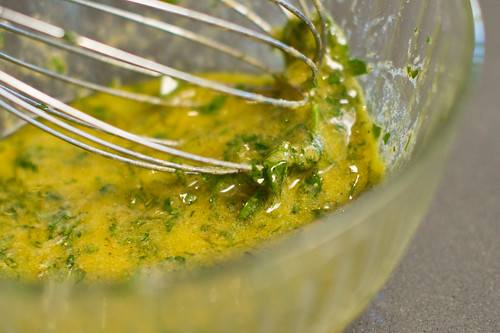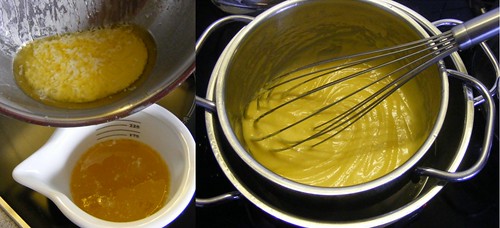 |
| from Flickr - by steve watson photos |
An emulsion is defined by Wikipedia as a mixture of two or more unblendable liquids. In an emulsion, one liquid is dispersed into another. The most common example of this would be a vinaigrette. As you all know, I tend to lean towards making my own salad dressings, so we've talked about this before. When you only use an oil and a vinegar, you have an unstable emulsion. This would mean shaking your salad dressing, and watching it separate before your eyes.
Egg yolks, mustard and honey can all act as emulsifiers...pulling together the two liquids that you are trying to blend. Many dressings, for instance, call for dijon mustard as an emulsifier. As you whisk in the olive oil, the dressing takes on a thick, opaque consistency...it's emulsified!
 |
| from Flickr - by www.drweil.com |
Hollandaise sauce is also an emulsion - and I know we've talked about that before - it's one of my favorite (albeit, unhealthy) sauces! To make homemade mayonnaise, you also need to use an emulsion technique. Whisking vegetable oil into vinegar or lemon juice, and then adding an egg yolk as an emulsifier pulls the substance together, creating the creamy texture we are used to in a store-bought jar of mayonnaise. This technique is also similar to what is done when making an aioli.
The interaction of ingredients is very important when attempting an emulsion. It requires the right balance of measurements, and some good ol' fashioned elbow grease to whisk it all together. Don't give up when your arm gets tired, because most likely, you aren't at the right point yet!
 |
| from Flickr - by FotoosVanRobin |
If you have questions about a specific emulsion, leave a comment and I'll be happy to elaborate. Maybe we'll even have a little emulsion series, if there's a large interest! It's a very interesting subject and it's very cool to watch your ingredients take on a totally different consistency before your eyes...heat not necessarily required!
No comments:
Post a Comment